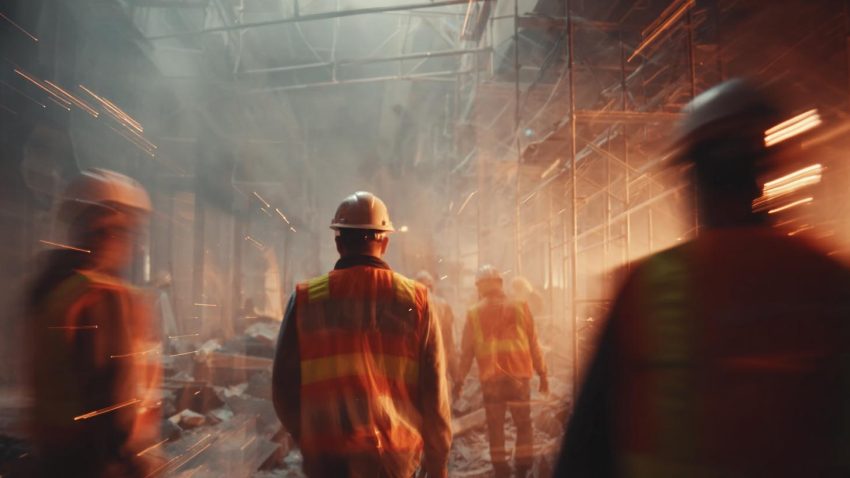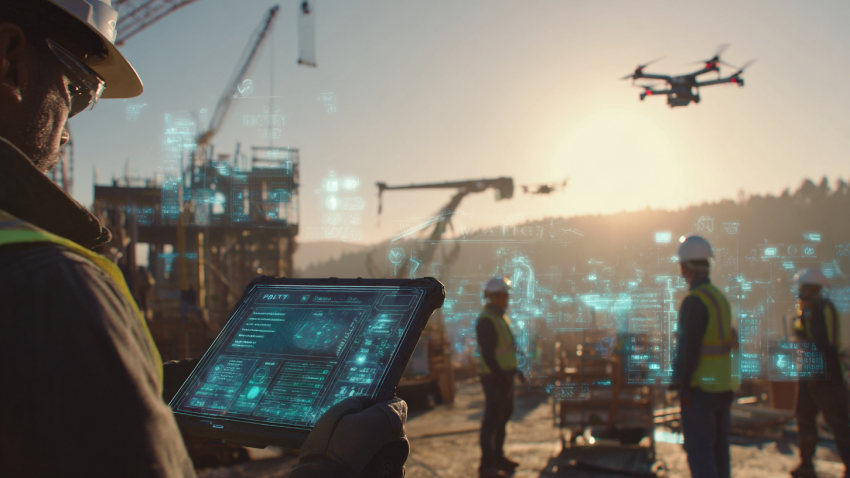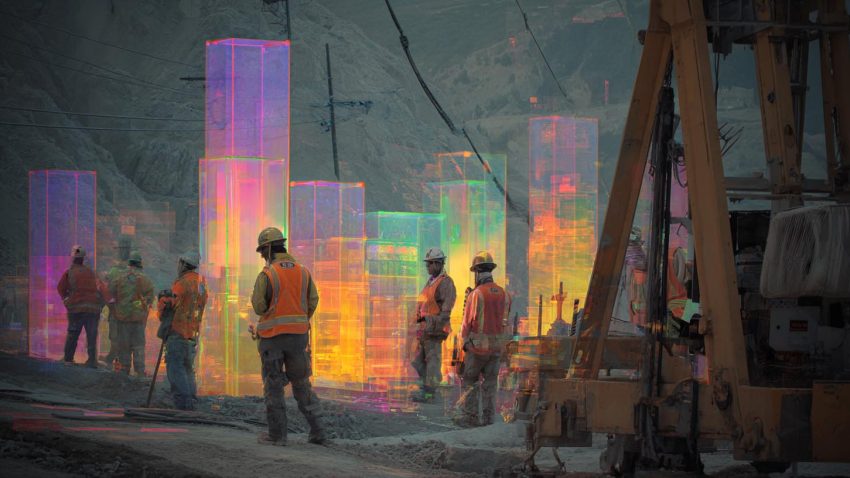Best Guide to Drones in Construction: Improving Site Management and Jobsite Efficiency
Table of Contents:
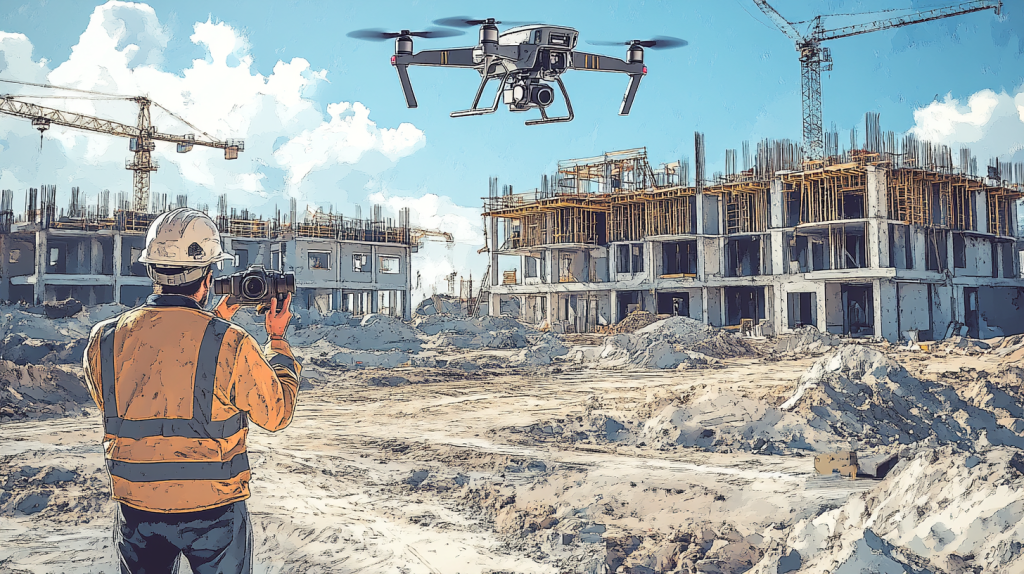
Drones have revolutionized the construction industry by providing unparalleled efficiency, accuracy, and safety on jobsites. These advanced tools enable project managers to gain insights into every phase of construction, from surveying to material monitoring, in ways that traditional methods cannot match. In this guide, we’ll explore how drones are shaping the future of construction, with sections dedicated to precision mapping, safety enhancements, logistics, and more.
The adoption of drones in construction is no longer a luxury—it’s becoming an industry standard. These aerial tools bring a unique perspective to jobsite management, offering a bird’s-eye view that was once only possible with expensive helicopter flyovers or satellite imagery. Drones provide detailed, real-time data, empowering project managers to make informed decisions quickly and accurately. This capability is particularly vital for large-scale projects, where the sheer size and complexity of the site can make traditional monitoring methods inefficient or impractical.
One of the most significant advantages of drones is their ability to perform precision mapping and topographical surveys. Equipped with high-resolution cameras and LiDAR technology, drones can capture minute details of the terrain, providing accurate data for planning and design. This data is invaluable for creating detailed 3D models and maps, helping construction teams visualize project layouts before breaking ground. Compared to manual surveys, which can take weeks, drones complete the same task in a matter of hours, reducing project timelines and associated costs.
Drones also play a crucial role in enhancing safety on construction sites. By monitoring hazardous zones and detecting potential risks, drones help minimize accidents and protect workers. For instance, drones equipped with thermal imaging can identify structural weaknesses or overheating equipment, allowing teams to address issues proactively. In addition, drones reduce the need for workers to perform dangerous tasks, such as scaling tall structures or inspecting unstable areas, further prioritizing safety.

Logistics is another area where drones are making a profound impact. Material monitoring and inventory tracking, which were once tedious and error-prone, have become streamlined and accurate with the help of drones. Project managers can use drones to track deliveries, monitor stock levels, and ensure materials are distributed efficiently across the site. This level of precision prevents delays caused by material shortages and helps maintain smooth project workflows.
The benefits of drones extend beyond operational efficiency. They also improve communication and collaboration among stakeholders. Drones can capture real-time visuals of jobsite progress and share them instantly with team members, clients, and investors. This transparency fosters trust and ensures that everyone involved in the project is aligned with its goals and milestones.
As we delve deeper into this guide, we’ll explore specific use cases and technologies that highlight the transformative power of drones in construction. From improving jobsite safety to integrating drone data with construction management software, these advancements are paving the way for smarter, faster, and safer construction practices. Whether you’re a contractor looking to adopt cutting-edge tools or a project manager aiming to optimize workflows, understanding the role of drones is essential for staying competitive in today’s construction landscape.
Using Drones for Precision Mapping in Construction
Site surveying has long been a cornerstone of successful construction projects. Drones bring precision and speed to this critical phase by capturing high-resolution aerial images and 3D models, drastically reducing the time and cost required for traditional surveys.
With drones, project managers can generate detailed topographical maps that identify potential obstacles before construction begins. These tools also streamline regulatory compliance by providing accurate, up-to-date data for permits and approvals. From large-scale infrastructure projects to urban builds, drone mapping ensures that no detail goes unnoticed.
Top Features
- High-Resolution Imaging: Capture detailed aerial images and videos for accurate topographical assessments.
- 3D Modeling Capabilities: Generate realistic models of construction sites for better planning.
- Automated Flight Plans: Pre-program flight paths for consistent data collection.
- Integration with GIS Tools: Combine drone data with geographic information systems for enhanced mapping.
- Real-Time Data Transmission: Receive mapping results instantly for faster decision-making.
Top Benefits
- Time Efficiency: Complete surveys in hours instead of days.
- Cost Reduction: Minimize the need for expensive manual surveys.
- Enhanced Precision: Achieve higher accuracy in mapping compared to traditional methods.
- Regulatory Compliance: Simplify permit approvals with accurate mapping data.
- Improved Decision-Making: Base project plans on real-time, reliable site data.
Related Articles
Drones in Construction: Top Ways They Enhance Safety and Minimize Risks
Best Guide to Construction Management Software
Superintendents: Effective Training Strategies for Construction Management Software Users
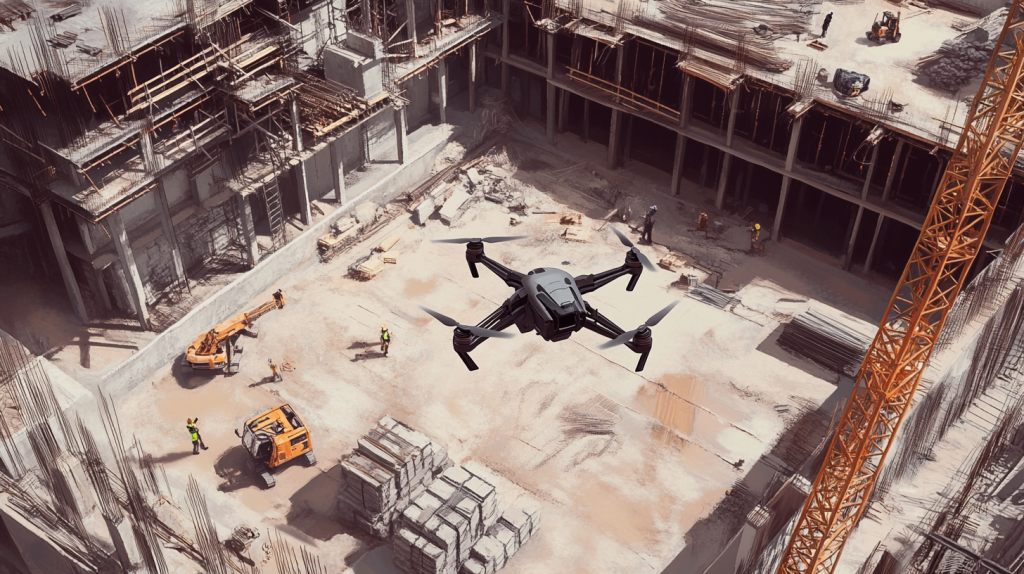
Simplifying Construction Logistics with Drones
Managing materials effectively is essential for the success of any construction project. Drones simplify logistics by tracking inventory levels, monitoring material movement, and providing insights into on-site storage. This automation reduces the risk of delays caused by misplaced or insufficient materials.
For large projects, drones can survey stockpiles, track incoming shipments, and even inspect materials for damage. Their ability to integrate with construction management software ensures seamless communication between field teams and project managers, enhancing overall efficiency.
Top Features
- Inventory Monitoring: Track material quantities and movement in real time.
- Shipment Inspections: Identify damaged materials before they reach the site.
- Stockpile Measurements: Assess storage areas quickly and accurately.
- Integration with Management Tools: Sync data with inventory systems for better oversight.
- Automated Alerts: Receive notifications when inventory levels drop below thresholds.
Top Benefits
- Reduced Delays: Ensure materials are available when needed.
- Cost Savings: Minimize waste by monitoring material usage closely.
- Improved Coordination: Align logistics teams with real-time inventory data.
- Increased Accuracy: Avoid manual errors in inventory tracking.
- Streamlined Communication: Share logistics updates instantly across teams.
Enhancing Jobsite Safety with Drones
Construction sites are inherently hazardous, but drones are helping to create safer work environments by identifying potential risks before they escalate. Equipped with high-resolution cameras and thermal imaging, drones can inspect hard-to-reach areas, monitor equipment, and detect safety hazards.
These insights allow project managers to address risks proactively, ensuring compliance with safety regulations and reducing on-site incidents. Drones also excel at post-incident analysis, helping teams identify root causes and prevent future issues.
Top Features
- Thermal Imaging: Detect structural weaknesses or overheating equipment.
- High-Resolution Cameras: Capture detailed visuals for safety inspections.
- Automated Flight Routes: Cover large areas quickly and efficiently.
- Incident Reporting Tools: Record and analyze safety breaches.
- Real-Time Hazard Alerts: Notify teams of potential dangers immediately.
Top Benefits
- Reduced Risk: Address safety concerns before they result in accidents.
- Improved Compliance: Ensure adherence to safety standards and regulations.
- Faster Inspections: Cover more ground in less time with drones.
- Enhanced Visibility: Monitor high-risk areas without endangering workers.
- Proactive Risk Management: Use insights to implement preventative measures.
Related Articles:
45 Benefits and Tips of Construction Management Software for Superintendents
Top 10 Applications of Drones in Commercial Construction
Tracking Project Progress with Drones
Drones provide a bird’s-eye view of construction sites, enabling real-time monitoring of project progress. From assessing completed tasks to identifying delays, these tools help project managers maintain control over every aspect of the build.
Drone footage can be shared with stakeholders to improve transparency and keep everyone updated on milestones. This real-time insight reduces the need for on-site visits, saving time and resources while maintaining accountability.
Top Features
- Live Streaming Capabilities: Share real-time video feeds with teams and stakeholders.
- Progress Reports: Generate detailed updates with drone-collected data.
- Milestone Tracking: Visualize completed and pending tasks with aerial footage.
- Integration with Scheduling Tools: Align drone data with project timelines.
- Collaborative Dashboards: Share progress insights across teams seamlessly.
Top Benefits
- Enhanced Visibility: Gain a comprehensive view of jobsite progress.
- Improved Accountability: Keep stakeholders informed at every stage.
- Reduced Site Visits: Save time with remote progress monitoring.
- Better Decision-Making: Base adjustments on real-time updates.
- Increased Efficiency: Address delays or inefficiencies as they arise.
Streamlining Delivery Coordination with Drones
Coordinating deliveries on busy construction sites is a logistical challenge, but drones simplify the process. By monitoring delivery routes, recording arrival times, and inspecting shipments, drones keep materials flowing smoothly and ensure project timelines are met.
Drones also reduce the need for manual oversight, freeing up resources for other critical tasks. Their ability to integrate with management software ensures every delivery aligns with the broader construction schedule.
Top Features
- Delivery Route Monitoring: Track vehicles and materials in transit.
- Shipment Inspection: Verify material condition upon arrival.
- Delivery Time Analytics: Identify bottlenecks and improve scheduling.
- Real-Time Updates: Notify teams of delivery progress and delays.
- Integration with Scheduling Tools: Sync delivery data with project timelines.
Top Benefits
- Improved Coordination: Keep all deliveries aligned with project needs.
- Reduced Delays: Address logistical challenges proactively.
- Cost Savings: Minimize downtime caused by late or damaged deliveries.
- Enhanced Oversight: Monitor every step of the delivery process.
- Better Resource Allocation: Free up teams to focus on other tasks.
Integrating Drone Data with Construction Management Software
Drones generate valuable data, but its true potential is unlocked when integrated with construction management software. This pairing enables seamless coordination between field operations and office teams, improving overall efficiency.
By syncing drone data with tools like scheduling platforms and inventory trackers, project managers gain actionable insights that enhance decision-making. This integration ensures every aspect of construction is informed by accurate, real-time information.
Top Features
- Data Syncing Tools: Integrate drone-collected insights with management systems.
- Automated Reporting: Generate progress and inventory reports instantly.
- Centralized Dashboards: Access all project data in one location.
- Collaboration Features: Share drone data with teams and stakeholders.
- AI-Driven Insights: Leverage analytics for smarter decision-making.
Top Benefits
- Increased Efficiency: Reduce redundancies by integrating tools.
- Enhanced Decision-Making: Base plans on accurate, real-time data.
- Improved Communication: Keep all teams aligned with shared insights.
- Cost Savings: Optimize workflows with data-driven strategies.
- Scalability: Manage projects of any size with integrated tools.
Improving Site Inspection Accuracy with Drone Technology
Inspections are critical for construction quality, but manual processes can be time-consuming and prone to errors. Drones transform inspections by providing detailed aerial views and thermal imaging, enabling teams to identify issues like cracks, structural weaknesses, or material inconsistencies instantly.
Drone inspections reduce the need for scaffolding or specialized equipment, making them safer and faster. With their ability to capture real-time data, drones ensure accurate, actionable insights for construction teams.
Top Features
- Thermal Imaging: Detect structural issues and equipment overheating.
- High-Definition Cameras: Capture close-up visuals of critical areas.
- Data Analytics Integration: Identify trends and potential risks automatically.
- Automated Flight Patterns: Ensure comprehensive coverage during inspections.
- Cloud Storage: Secure inspection data for easy access and collaboration.
Top Benefits
- Time Efficiency: Complete inspections in a fraction of the time required manually.
- Enhanced Safety: Reduce the need for dangerous on-site inspections.
- Improved Accuracy: Detect issues that may be missed during manual inspections.
- Cost Savings: Eliminate the need for costly scaffolding or specialized equipment.
- Streamlined Reporting: Share findings instantly with all stakeholders.
Drones and Construction Progress Reporting
Keeping stakeholders informed is vital for successful construction projects. Drones provide real-time updates, capturing images and videos that showcase progress and highlight any challenges. These visuals offer transparency and keep all stakeholders aligned.
By automating progress reporting, drones save time for project managers and provide a reliable way to document milestones. Whether for internal reviews or client presentations, drone footage makes reporting more engaging and effective.
Top Features
- Live Video Streaming: Share real-time visuals with clients and teams.
- Progress Tracking Dashboards: Sync drone data with construction schedules.
- Customizable Reports: Tailor progress updates to specific stakeholder needs.
- Data Integration Tools: Combine drone visuals with productivity metrics.
- Secure Cloud Storage: Archive progress data for future reference.
Top Benefits
- Improved Transparency: Provide clear updates to stakeholders at every stage.
- Better Collaboration: Align teams with real-time visuals of jobsite progress.
- Time Savings: Automate reporting processes and focus on execution.
- Enhanced Accountability: Document milestones to verify project timelines.
- Increased Efficiency: Identify and resolve issues before they escalate.
Related Articles
- Material Monitoring and Inventory Tracking: How Drones Simplify Construction Logistics
- Integrating Drone Data with Construction Management Software for Smarter Decision Making
Enhancing Worker Training and Education with Drone Insights
Drones are not only tools for jobsite monitoring but also valuable resources for training and education. By capturing aerial footage, drones allow teams to study real-world challenges and learn how to address them effectively.
From safety training to logistics coordination, drone data helps bridge the gap between theory and practice. Teams can analyze drone footage to identify inefficiencies, improve workflows, and understand jobsite dynamics better.
Top Features
- Training Dashboards: Use drone footage to simulate jobsite challenges.
- Real-Time Scenario Analysis: Highlight live examples of best practices.
- Custom Training Modules: Create industry-specific educational resources.
- Risk Management Insights: Train teams on mitigating common construction risks.
- Compliance Tutorials: Educate workers on adhering to safety standards.
Top Benefits
- Improved Skills: Equip workers with hands-on knowledge from real-world scenarios.
- Enhanced Safety Awareness: Use drone visuals to identify and correct unsafe practices.
- Increased Productivity: Train teams to work more efficiently using actionable insights.
- Cost Savings: Minimize downtime during onboarding or training sessions.
- Stronger Teams: Build confidence by empowering workers with advanced tools.
Related Articles
- Efficient Delivery Coordination with Drones in Construction Logistics
- Using Drones for Precision Mapping in Construction
Unlock the Full Potential of Your Construction Projects with StruxHub
StruxHub enhances efficiency and coordination across all project phases, providing a single source of truth that eliminates silos and fosters collaboration. Real-time updates, financial management tools, and seamless commvunication features ensure that all team members and stakeholders are aligned and informed, reducing the risk of errors and delays. With comprehensive solutions for document management, risk mitigation, and quality control, StruxHub maintains project integrity and safety, while mobile access and integration capabilities further enhance project flexibility and efficiency.
StruxHub’s Key Features and Benefits:
- Advanced Delivery Management: Automate and optimize your delivery schedules, ensuring materials arrive just in time, every time.
- Site Communication: Utilize georeferenced maps and instant messaging to keep every team member informed and aligned.
- Construction Materials Management: Track inventory levels and manage materials procurement with ease, reducing waste and avoiding project delays.
- Construction Safety & Inspection Workflows: Implement customizable mobile forms for conducting safety inspections and managing compliance documentation effortlessly.
- Short-Term Scheduling: Visualize project tasks with detailed floor plans, linking each activity to specific locations for better planning accuracy.
- Construction Resource Management: Efficiently allocate personnel and equipment, maximizing productivity and reducing idle time.
StruxHub’s Product Offering:
- StruxHub Deliveries: Simplifies the coordination of incoming deliveries, ensuring materials and equipment are precisely timed to project needs.
- StruxHub Logistics: Offers intelligent site logistics planning, from crane scheduling to space allocation, for smoother operations.
- StruxHub Safety: Elevates on-site safety standards with easy-to-use tools for inspections, permits, and incident reporting.
- StruxHub Scheduling: Enhances project timelines with intuitive scheduling tools that ensure tasks are completed efficiently and on time.
With StruxHub, construction companies can look forward to a streamlined, more efficient project execution that delivers on time and within budget. Embrace the power of innovation and take your construction projects to the next level.
Don’t miss out on the opportunity to optimize your construction management processes with StruxHub. Sign up for a free demo today. Let’s build smarter, together.
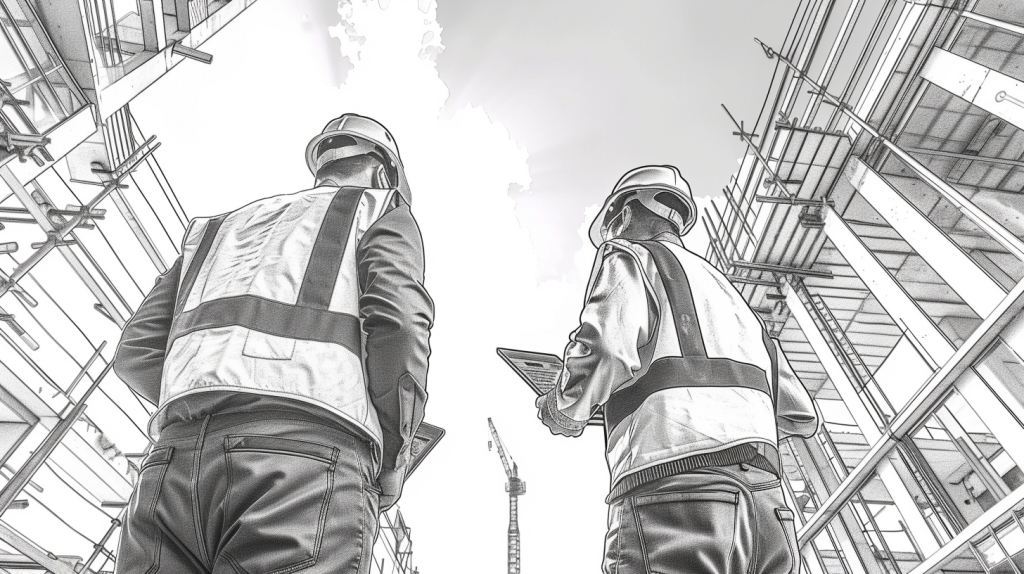
StruxHub: Revolutionizing Project Management in Large Commercial Construction
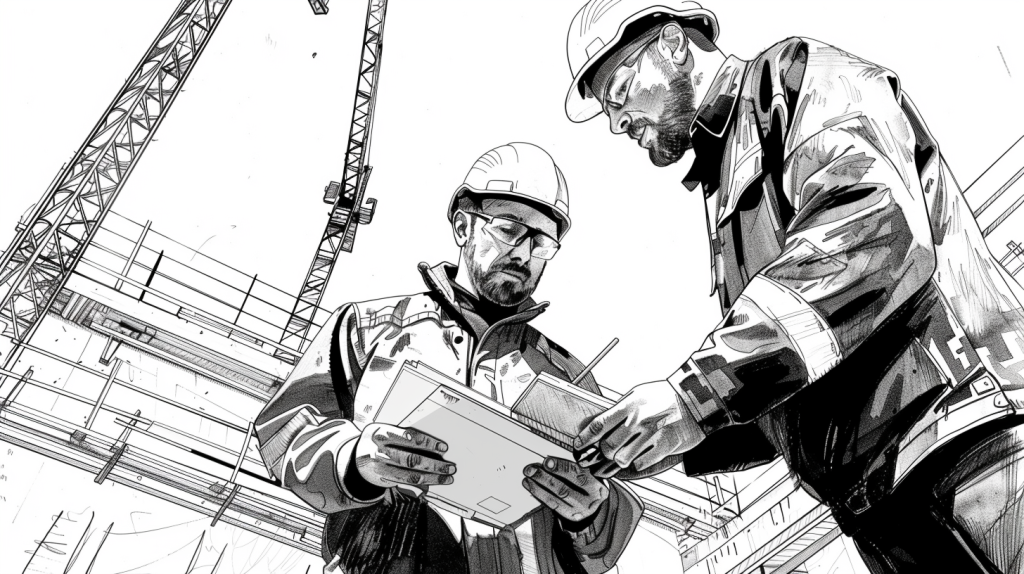
StruxHub
Experience the power of StruxHub today and witness firsthand how it can revolutionize your construction operations.

